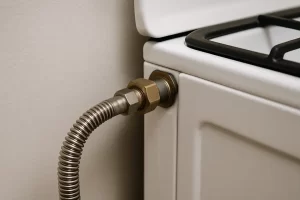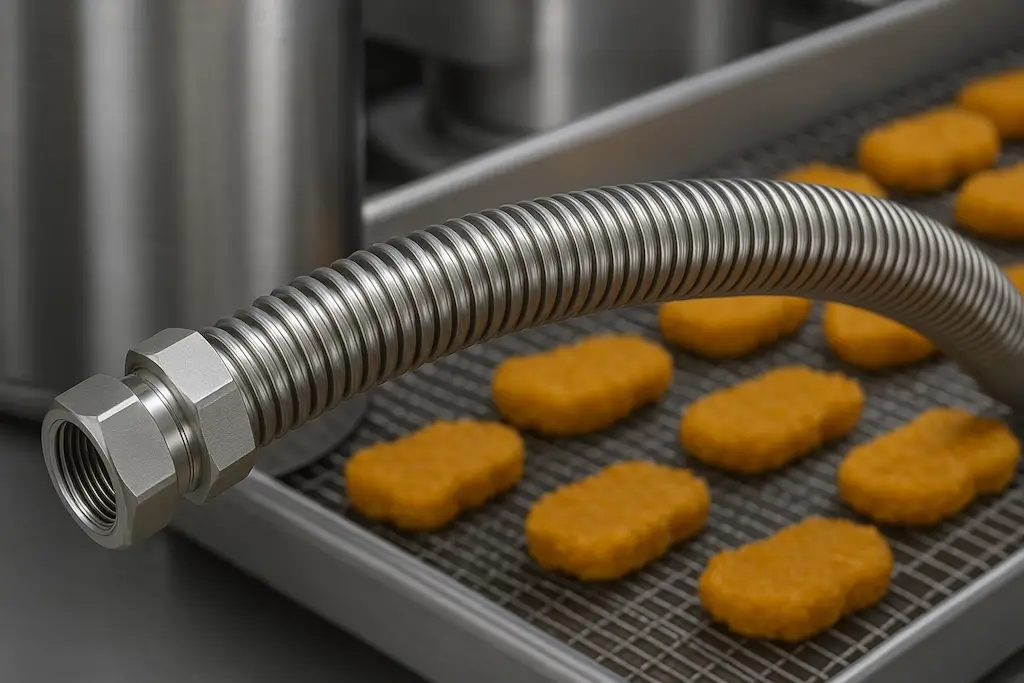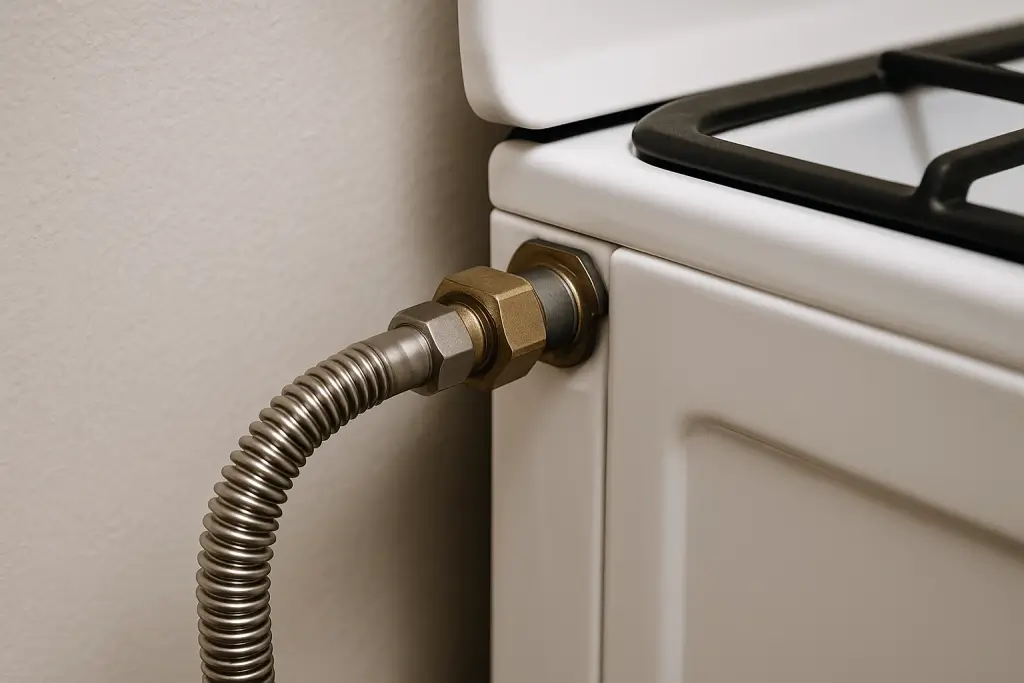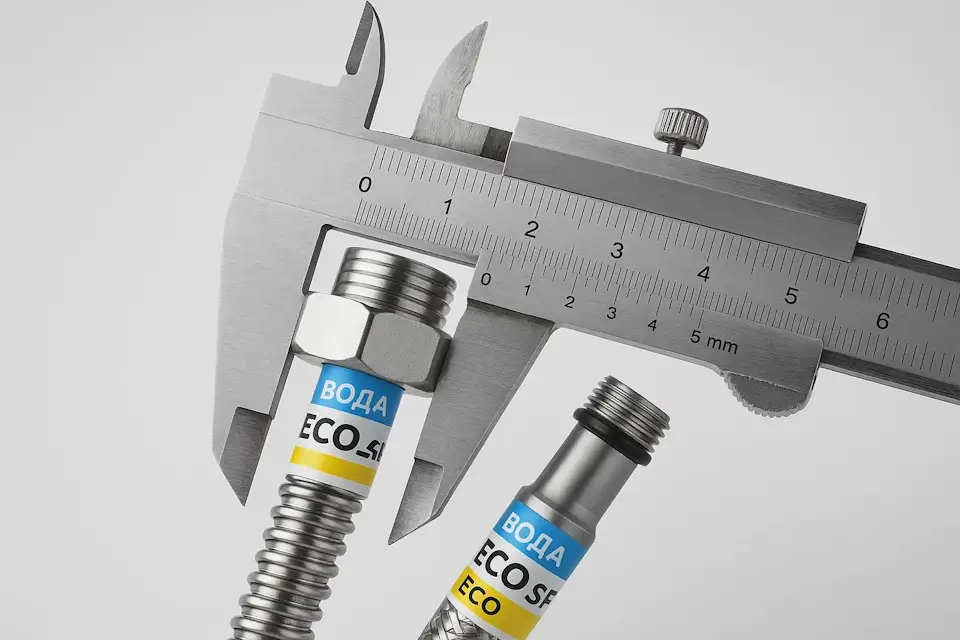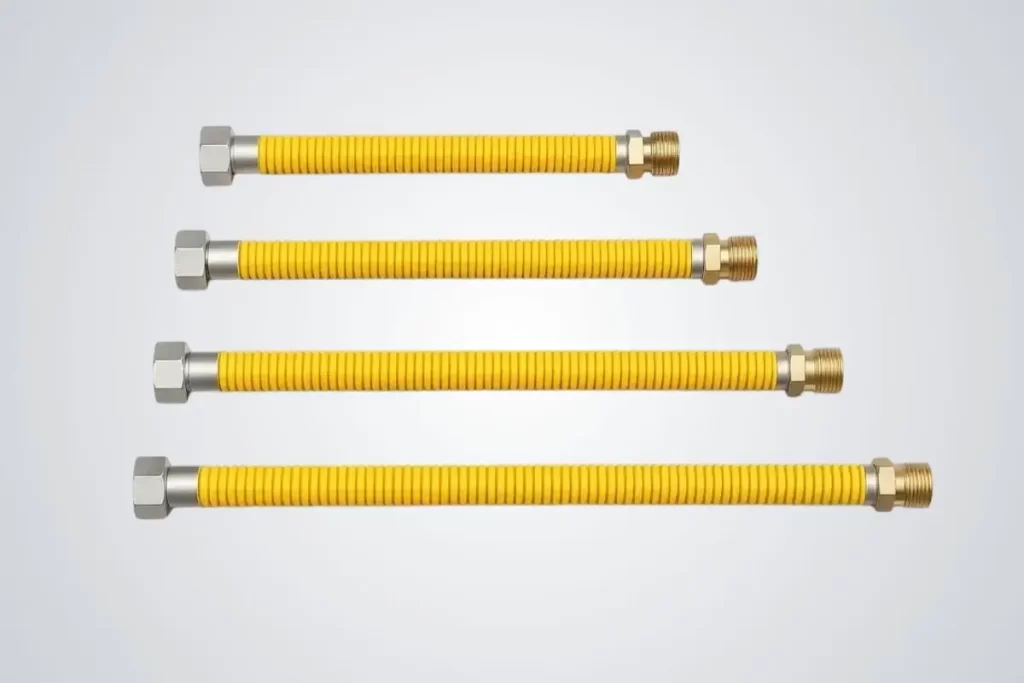 When connecting gas equipment, such as a gas stove, oven or boiler, one of the key elements is the gas hose. Its correct choice, and especially its length, plays a critical role in ensuring the safe and reliable operation of the entire system. An incorrectly selected hose can lead to leaks, malfunction of the device or even dangerous situations. In this article, we will consider what the length of the gas hose should be in accordance with standards and practice.
When connecting gas equipment, such as a gas stove, oven or boiler, one of the key elements is the gas hose. Its correct choice, and especially its length, plays a critical role in ensuring the safe and reliable operation of the entire system. An incorrectly selected hose can lead to leaks, malfunction of the device or even dangerous situations. In this article, we will consider what the length of the gas hose should be in accordance with standards and practice.
First of all, it is important to remember that there is no universal “ideal” length of the gas hose that is suitable for all cases. The length of the hose must be selected individually for each specific connection based on the location of the gas line and the device to be connected.
Why not take a too long hose?
The maximum length of the gas hose should not exceed 3 meters, according to the current regulations and the manufacturers’ instructions. Long distances are recommended to be implemented through a stationary metal pipe connection, not a hose. Nevertheless, there are bellows gas hoses with a length of 5 and even 10 meters, but they have a very limited application.
In addition, it should be taken into account that:
- excessive length creates unnecessary bends, which may crack or pinch over time;
- a long hose is easier to bend, get crushed by furniture or damaged when moving;
- dust and dirt accumulate more easily on a long hose, which makes it difficult to clean and monitor its condition;
- in the event of a fire or accident, the long hose makes it difficult to quickly shut off the gas supply;
- according to safety regulations, the hose should not pass through walls or partitions – its length should be the minimum necessary.
What is the minimum length of the gas hose?
The hose should be long enough to ensure free connection of the gas appliance without tension. It should not be stretched, twisted or compressed. This prevents excessive load on the connection and possible gas leaks. Also, the hose should allow the device to be easily moved for cleaning or maintenance, but without excessive sagging.
Recommendations and standards for choosing the length of gas lines
According to construction and technical regulations, the optimal length of a household gas hose is from 0.5 to 2 meters – in most cases this is sufficient for connecting any household gas appliances. This range usually provides a secure and convenient connection.
When choosing a hose, you should also pay attention to:
- Material: Gas hoses can be rubber with fabric reinforcement or metal (bellows). Metal hoses made of stainless steel are considered more reliable and durable, as they are more resistant to mechanical damage and high temperatures.
- Service life: Each gas hose has its own expiration date, which is specified by the manufacturer. After this period, the hose must be replaced even if it looks intact.
- Availability of certification: Gas hoses must have quality and safety certificates. All gas hoses of Eco-Flex have relevant documents.
- Absence of connections: The gas hose must be complete. It is strictly forbidden to extend gas hoses using various adapters and connections. Any additional connection is a potential place for gas leakage.
Remember that safety is a priority when working with gas. The correct choice of length and type of gas hose, as well as professional installation, is the guarantee of your peace of mind and the safety of your home.
A wide line of hose lengths for gas hoses from Eco-Flex
We produce stainless steel gas hoses from 0.3 to 2.5 m long that meet the requirements of DSTU and European standards. We also offer mounting elements, fittings and consultations on connecting gas devices.
Not sure about the choice? Contact us – we will tell you the optimal length for your equipment!
